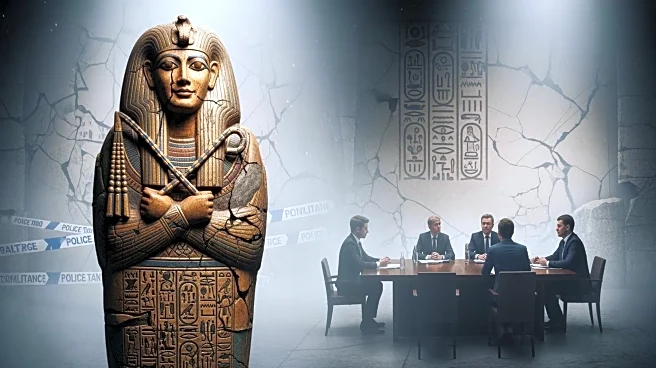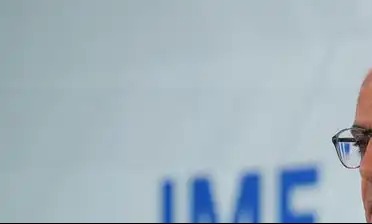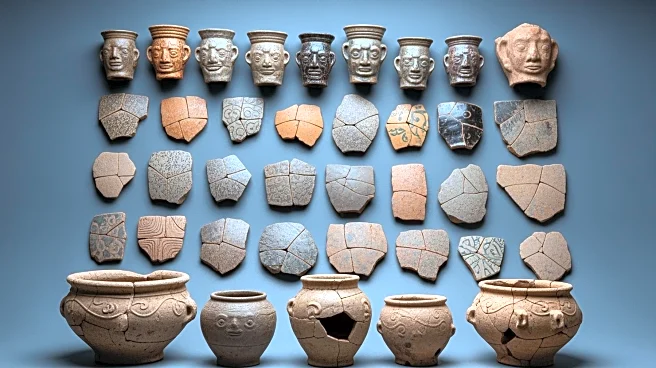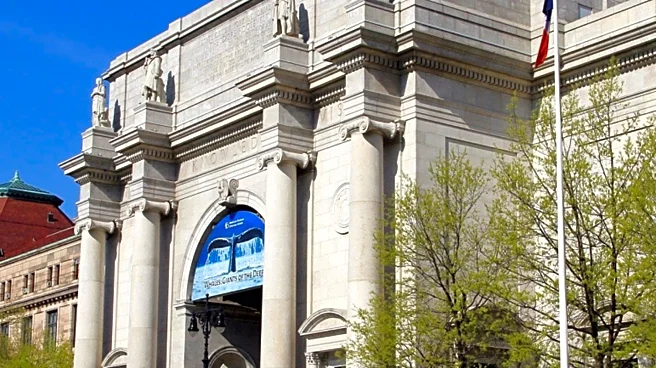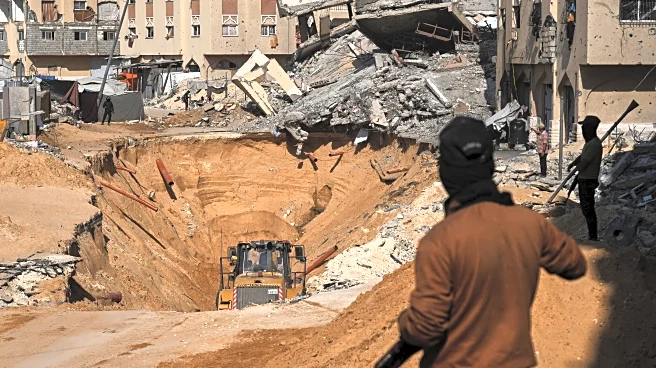What's Happening?
Researchers have reported that the tomb of Tutankhamun is on the verge of collapse due to widening cracks and increased humidity. These cracks, initially formed after a flood in 1994, have allowed rainwater
to infiltrate the tomb, fostering mold growth that threatens the preservation of its ancient frescoes. The tomb, known as KV62, is a significant archaeological site, housing the mummy of Pharaoh Tutankhamun. The deterioration of the tomb poses a risk to its historical artifacts and the integrity of the site.
Why It's Important?
The potential collapse of Tutankhamun's tomb highlights the challenges in preserving ancient archaeological sites. The tomb is a critical piece of Egypt's cultural heritage and attracts significant scholarly and tourist interest. Its deterioration could lead to the loss of invaluable historical information and artifacts, impacting archaeological research and tourism. The situation underscores the need for effective conservation strategies to protect ancient sites from environmental and structural threats.
What's Next?
Efforts to address the structural issues in Tutankhamun's tomb may involve advanced conservation techniques and international collaboration. Researchers and conservationists will likely prioritize measures to stabilize the site and prevent further damage. The situation may prompt increased funding and resources for archaeological preservation, emphasizing the importance of safeguarding historical sites against environmental challenges.
Beyond the Headlines
The deterioration of Tutankhamun's tomb raises broader questions about the sustainability of archaeological preservation. It highlights the ethical considerations in balancing access to historical sites with their protection. The situation may inspire discussions on innovative conservation methods and the role of technology in preserving cultural heritage.
